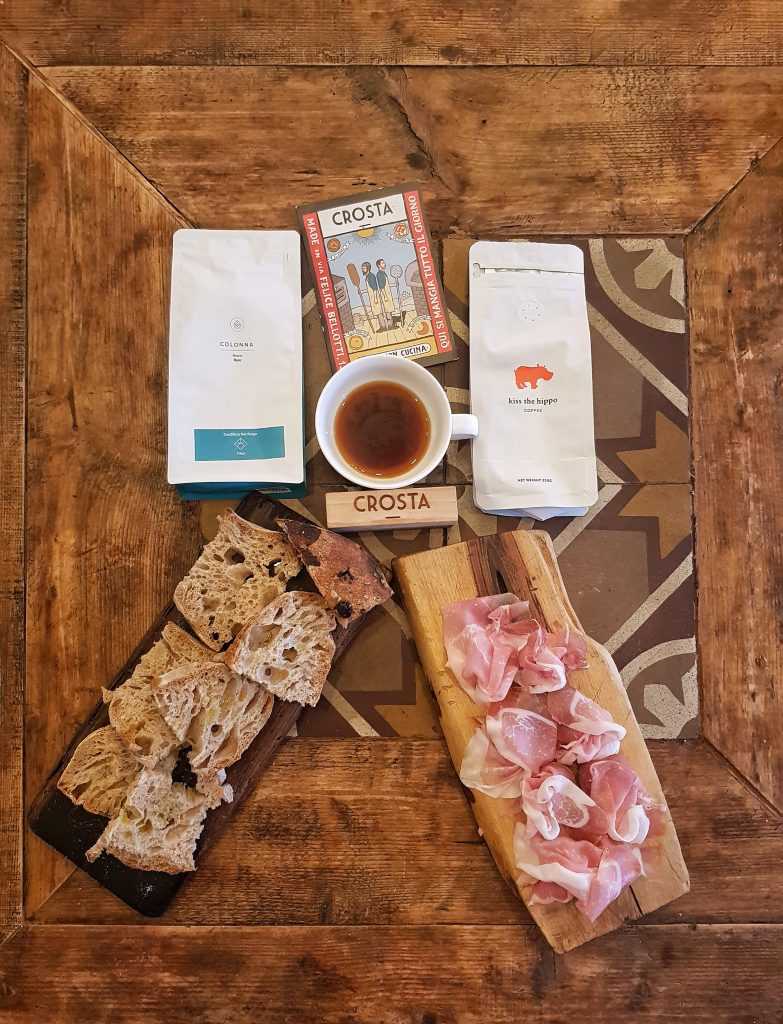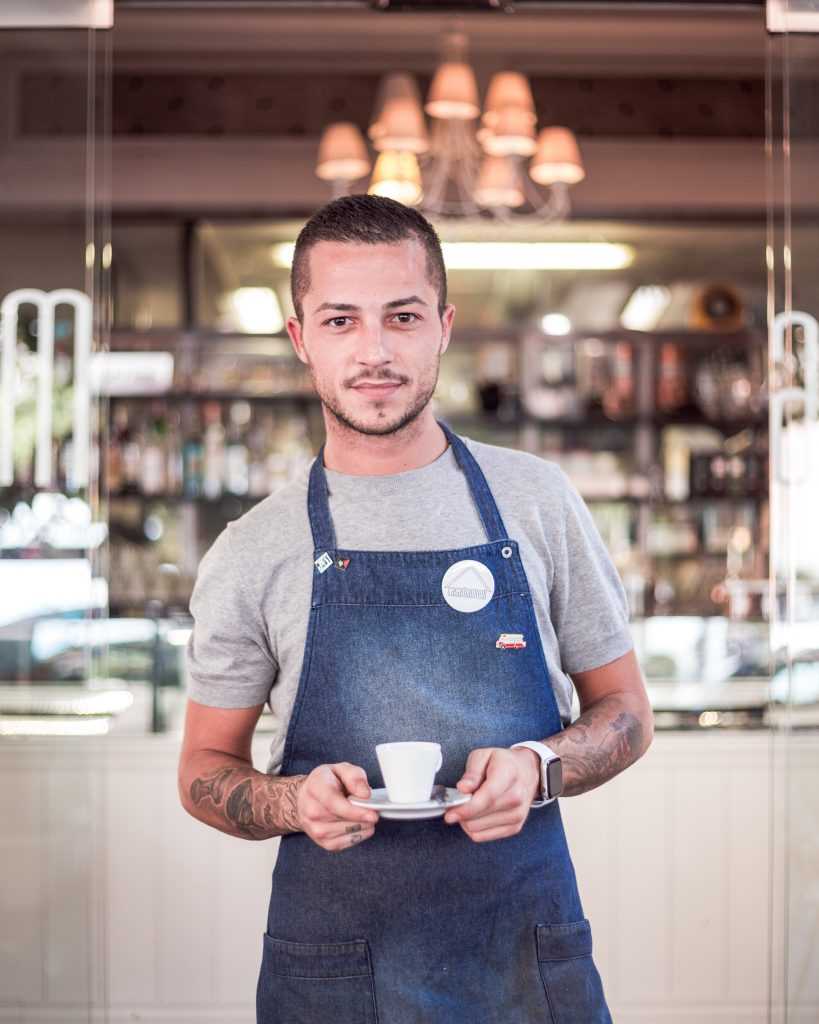MILAN – Communicating brands, products indeed the world behind the final result is a delicate yet indispensable task when promoting a company and an entire sector. In the era of social media, online visibility, where Instagram, Pinterest and other platforms are maintained mainly through the use of images, knowing how to use visual content in storytelling counts. It has to be attractive, impactful, emotional yet not at all cliched.
This is a very delicate task, carried out by communicators on every level, including photography. That is why we have decided to take a more “objective” look, in every sense, at the story of coffee in one shot with the help of Federico Pezzetta, @coffeeandlucas, who is part of the Romedia Studio team alongside Federica Balestrieri. Known by the community, not only for their constant work between fairs and events dedicated to the bean, but also for their creation which has been embraced around the world: the video documentary “Coffees – Italians do it better(?) which explores the world of speciality coffee.
We asked Federico Pezzetta what it means for him to talk about coffee through photography?
“Talking about coffee through photography means being able to get an idea across instantly, as long as the photo is effective.”
How important is image communication today in reaching the consumer?

credits @romediastudio
“Image communication is fundamental. After all, we live in a society where we are continuously bombarded by images and advertisements. So to reach the consumer, you have to be creative. Otherwise our message will be lost among the hundreds that every user sees every day. ”
Federico Pezzetta: is coffee a photogenic product?
“Coffee is an extremely photogenic product! At the same time, talking about coffee exclusively through impeccable images runs the risk of anesthetizing the user. In fact, sometimes you have the feeling of seeing a series of shots that are all the same and too constructed. Again, you have to find a balance so as not to appear artificial. Coffee also comes out well in the company”
How did you get that message across at your CoffeeAndLucas goes to Crosta event? what was the particularity of the event?

“CoffeeAndLucas goes to Crosta was a really informal event which took place in what I think is one of the best new clubs in Milan. I called it “event “ but actually it was no different or new to me compared to what I’ve been doing for the last 4/5 years: talking about coffee and sharing coffee. I’ve often done it without having to create who knows what hype around it.
Like the time when I started a pop up of Ritual Coffee Roasters in a temporary shop in Rome(exponent of the first hour of the third wave of the west coast, san francisco). Or during an international coffee day in Genoa, I stood behind the counter of Tazze Pazze preparing filter coffee, giving customers information together with the staff.
The particularity that I would highlight of the Crosta event is surely the fact that Crosta is not a specialty café. This aspect has really allowed me to share special coffees not only with enthusiasts, who already know the product but with normal Crosta customers (who are usually used to a different product).
We literally took possession of the espresso machine in those 3 hours. Changing the house blend with two coffees that were provided to us by Colonna Coffee and Kiss The Hippo who decided to be partners of the event. The feedback we collected regarding the both espresso and filter coffees was positive and the experiment was definitely a success and has gave me many ideas for other projects that I will begin to develop shortly.
The message we launched before and especially during the morning from Crosta was based on informality and inclusiveness.“ Is the way of communicating coffee different in Italy compared to abroad? Federico Pezzetta replies: “In Italy 4/5 years ago creative and social communication practically did not exist, at least not on specialty coffee; there were only institutional channels. In this sense, the documentary Coffees – Italians do it better (?) Which I codirected together with Federica Balestrieri, combined with the activities of Romedia Studio (which does not work only in the coffee sector) and the subsequent growth of CoffeeAndLucas were a good forerunner for the birth of a small movement that had already been developing in Europe for some time. ”
What, according to Federico Pezzetta, makes the consumer curious? What shot could open up the doors to specialty?

“Simplicity and irony are key, in my opinion. A good shot helps, but sometimes it’s not necessarily the right choice. It really depends on the situation, the context and the message you want to convey. However, a photo of a particular filter extraction method nearly always attracts attention if it is the first time you see it.”
What do you focus on when you want to photograph an espresso? Or an alternative method of extraction? Do they need two different narratives?
“It depends on the target market. In Italy also in the specialty field, the cream (foam) of the espresso always grabs the attention (even if it is in a different way) while that isn’t really the case abroad. Photographing the extraction of a double espresso with a naked filter can certainly bring out a nice shot. Or a well presented espresso served at the table, perhaps with a particular tray or a cup made by some local craftsman. The filter is slow coffee, so the narrative concept is the opposite: Take your time. Take it easy.
Enjoy the atmosphere. Share. These are some of the key concepts of filter coffee. ”
How can advertising communication be distinguished from storytelling in coffee photography?
“It’s an interesting question, because the two paths are intertwined. Indeed, in a high level advertisement, storytelling (whether it is photographic or video) is fundamental.”

The bartender and then the machine: how can they be put together in the same shot? Where should the focus be?

“It depends on what you want to communicate. If the focus is on the machine, whether the bartender is on the scene or not, the attention must be on the machine.
If, on the other hand, communication revolves around the bartender, his personality, his emotions must come out. We need to highlight those details that will make him shine through“
The path of the specialty documentary: is this approach ongoing or should it be reformulated?
Federico Pezzetta has no doubts: “Absolutely. Any initiative in this regard is super positive. Coffees-Italians do it better (?) had no production company behind it nor press offices to run it for the big media and has been viewed over 80,000 times and has been shown in cities such as London, Amsterdam, Auckland, Berlin and the list keeps on getting longer even today.
So new projects that continue along the same lines and add other innovations are welcome. The key, as usual, is to be able to think of a documentary in a new language that deals with topics that have never been dealt with before. That was the strong point of Coffees. “
We recently talked to Umeko Motoyoshi about coffee waste Which took inspiration from the many photos in which litres of coffee fly through the air, being unnecessarily thrown away. What does Federico Pezzetta think about it?
“From this point of view I have a “softer”. I think that in order to get the message across, even an image where coffee is “wasted” can be functional. At the same time, I also understand what he means and in fact sometimes seeing coffee flung from a v60 or Chemex is a bit of a blow to the heart when the message behind the shot is just for the sake of it.”
translaction by Damion Harris


















